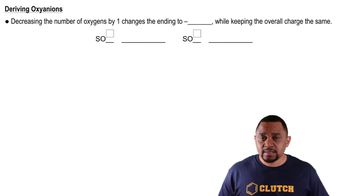Here are the essential concepts you must grasp in order to answer the question correctly.
Ionic vs. Molecular Compounds
Ionic compounds are formed from the electrostatic attraction between positively and negatively charged ions, typically involving a metal and a non-metal. In contrast, molecular compounds consist of molecules formed by covalent bonds between non-metal atoms. Understanding the distinction between these two types of compounds is essential for predicting their properties and behaviors.
Recommended video:
Chemical Formula Interpretation
The chemical formula of a compound provides information about the types and numbers of atoms present. For example, in Ca(NO3)2, 'Ca' represents calcium, a metal, while 'NO3' is the nitrate ion, a polyatomic ion. Recognizing the components of a chemical formula helps in determining whether a compound is ionic or molecular.
Recommended video:
Intepreting the Band of Stability
Polyatomic Ions
Polyatomic ions are charged entities composed of two or more atoms covalently bonded together, which function as a single ion. In the case of Ca(NO3)2, the nitrate ion (NO3-) is a polyatomic ion that pairs with calcium (Ca2+) to form an ionic compound. Familiarity with common polyatomic ions is crucial for identifying the nature of compounds.
Recommended video:
Polyatomic Ion Variations
 Verified step by step guidance
Verified step by step guidance


